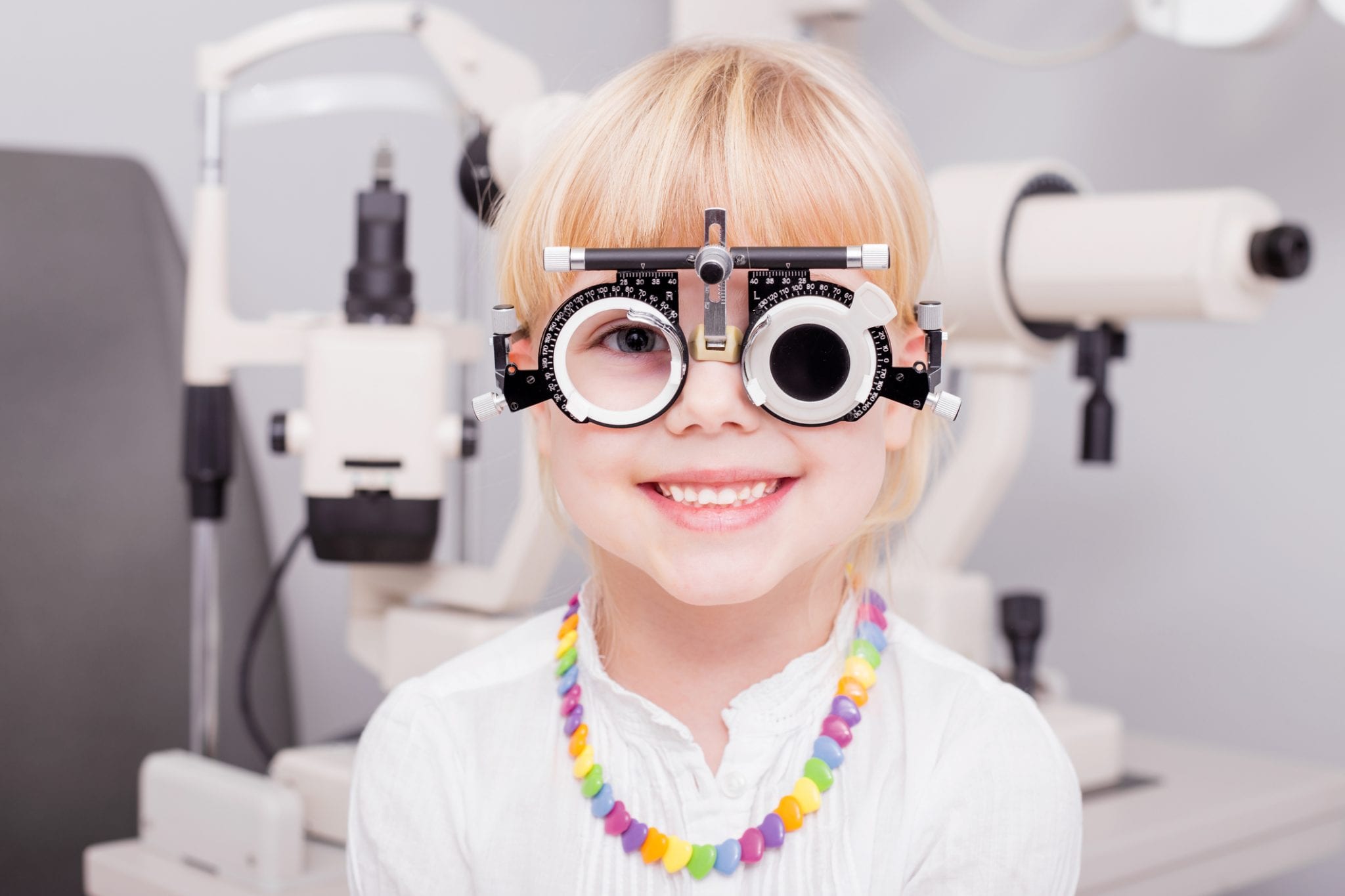Understanding the Difference Between a Pediatric Eye Exam and a Visual Screening.
There’s a lot of confusion over the different tools to test your child’s vision. For anyone that has young children, it’s important to understand the differences between a Pediatric Eye Exam and a Visual Screening. If you take away one thing from this article, it would be this; A visual screening is not a substitute for a Pediatric Eye Exam.
A Visual Screening is a tool most doctors use to gauge a child’s vision. They use a reading chart (known as a Snellen Chart) with letters at the top in a large font that get smaller and smaller towards the bottom. A large “E” is on the top line, followed by a 2nd line with “F & P” and so on. Used primarily by pediatricians and school nurses, the Snellen Chart was developed by Dutch eye doctor Hermann Snellen in the 1860s. A person taking the test covers one eye from 20 feet away, and reads aloud the letters of each row, beginning at the top. The smallest row that can be read indicates the visual acuity of that eye. Snellen charts are inexpensive and are used for approximate assessment of vision in a doctor’s office.
This method can uncover vision problems such as near and distance vision (farsightedness and nearsightedness). But this method does not uncover eye disease, disorders, or conditions that need further evaluation. The downside of a Visual Screening is that it only tests, at most, two areas of vision.
A Pediatric Eye Exam is a comprehensive set of tests performed by an eye care professional such as an optometrist or ophthalmologist. During a Pediatric Eye Exam, your doctor tests many areas of your child’s eye such as color vision, eye movement, depth perception, peripheral vision, fluid pressure and visual acuity. Sometimes doctors dilate your child’s eyes to see how their pupils react to light and to check the interior structures of the eye to ensure proper health. Another benefit of dilation is that it allows the doctor to see any evidence of eye disease. The Pediatric Specialists at Florida Eye Specialists and Cataract Institute have detailed what standard tests they perform during a Pediatric Eye Exam. Visit our previous post about your child’s first eye exam to read more.
Our pediatric eye doctors recommend that every child has a comprehensive Pediatric Eye Exam starting at two years of age and then every year after because 5–10% of preschoolers and 25% of school-aged children have vision problems. Early detection of these problems allows your children to receive treatment while they are still developing their vision system, and it ensures they can perform their best at school and during play.
Contact our office today at 813-681-1122 if you have any questions or would like to inquire about your child’s eye health. Or you can request an appointment online, and we’ll get back to you.



